Like all overseas departments, Reunion Island is no exception and must deal with the need for permanent air conditioning, which represents about half of the electricity consumption of the tertiary sector (offices, shops, hotels).
In order to reduce this consumption and reach the objective set by the energy transition law, i.e. total electrical autonomy by 2030, EDF (French energy supplier) has targeted the sites that consume the most electricity and the South Hospital in La Réunion has been identified to develop a SWAC project.
The cold production required for the air conditioning of all the premises of the University Hospital and its location, close to the coast, make it an ideal choice for a first pilot site, wich could be duplicated on other sites of the island in the future. After conclusive studies conducted by EDF, ADEME (Environmental and Energy Management Agency) and the Region, the project is finally launched in 2019 by the South University Hospital of La Réunion.
Taking its acronym from “Sea Water Air Conditioning”, the SWAC project is a marine air conditioning system used to cool a district or a building. This principle aims to reduce the cost of electricity consumption (the gain on electricity consumption can reach 90%) while having a very low environmental impact.
Cold seawater (5-7° C) is pumped from great depths (about 1000 meters) and then brought back to earth through hydraulic pipes. Its role is to cool a chilled water loop via heat exchangers, which will then supply cold to the connected buildings. Now heated (11-12° C), the sea water is returned to its source, at a depth appropriate to its temperature, and without impact on the local ecosystem.
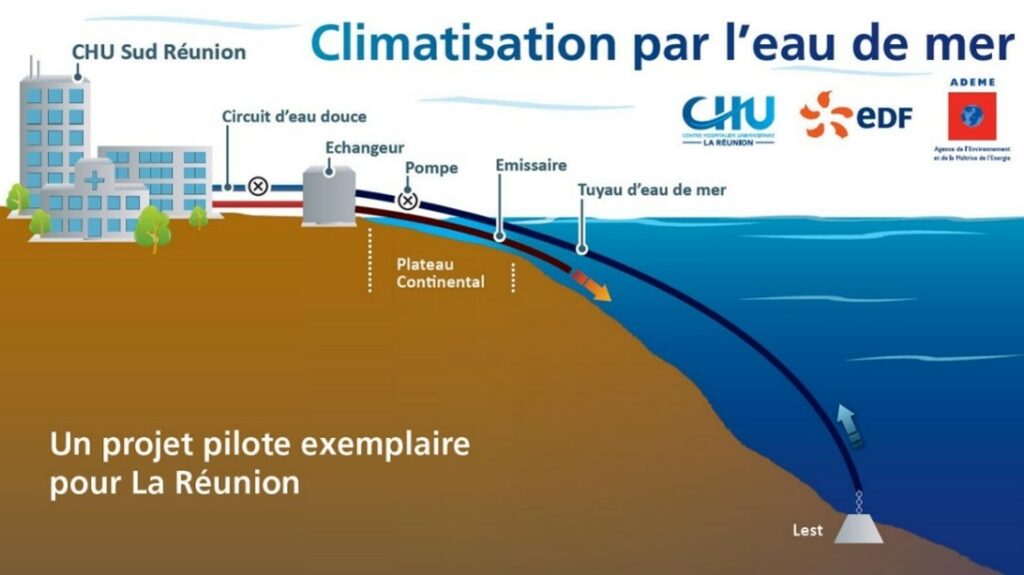
Three SWAC projects have already been launched in the Pacific Ocean in Tahiti and Hawaii, the one in La Réunion Island is the first to be deployed in the Indian Ocean.
The ID OCEAN engineering office is specialized in coastal surveys and inspection of structures, particularly in ports and marinas. Located in La Réunion Island, it benefits from the geographical and underwater specificity of the island to carry out data acquisition at different depths.
Solicited by Value-Park, world pioneer of this SWAC technology, ID OCEAN is a member of the Maritime Cluster of Reunion Island. The research department has been involved in the completion of the first bathymetric survey of the coastal zones in the area where the device is installed. This step is essential to acquire a first salvo of data before implementing the route studies and checking the technical feasibility.
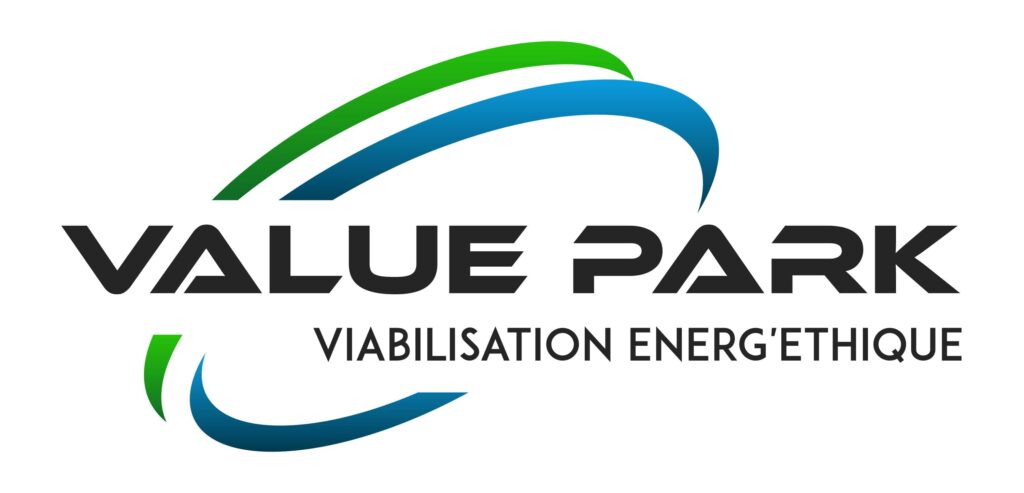
At the beginning of 2022, just before a cyclonic period, ID OCEAN’s teams embarked off Saint-Pierre, south of La Réunion Island. This area is known for its particularly difficult sea conditions, strongly exposed to wind and swell. The ID OCEAN hydrographers chose a vessel adapted to these conditions and designed to immerse the echosounder at an unusual depth, more than 2 meters, in order to avoid bubbles due to swell and acoustic disturbances.
With the sea floor plunging very quickly, typical of the island, the area to be surveyed is substantial. As many as 12 hours of navigation spread over 2 days were necessary to carry out the bathymetry, without counting the calibration, the SVP profile, the mobilization / demobilization, etc. On the first day, the R2Sonic 2022 echosounder was set to a variable aperture up to 15° closed at the deepest point at -400 meters on the drop-off, in order to capture the deepest areas. On the second day, the sounder had an aperture of 100° for the entire reef flat.
The drop-off was the most complex part to acquire since it was necessary to mechanically orient the bathymetric sounder in a precise angle for cleaner data and a reduction in post-processing time.
Despite the difficult conditions, the results are impressive, as a member of Value Park testifies: “The resolution and accuracy obtained for this survey at such depths, and in these conditions with a light sonar adapted to shallow water surveys, is a technical feat”.
The data acquired provides detailed bathymetry of the future hydraulic pipe-laying area at depths of between -20 and -420 meters.
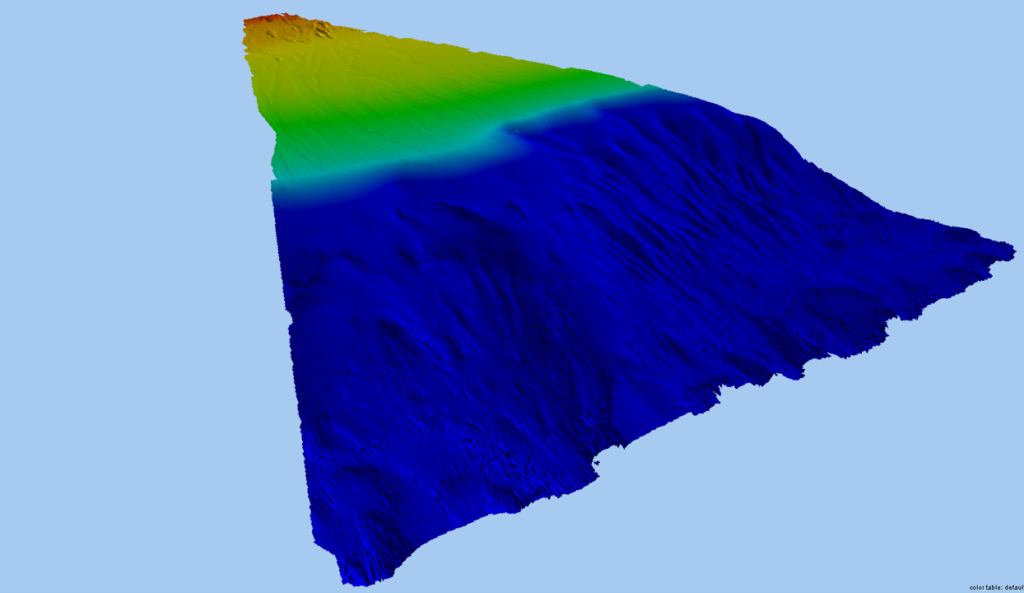
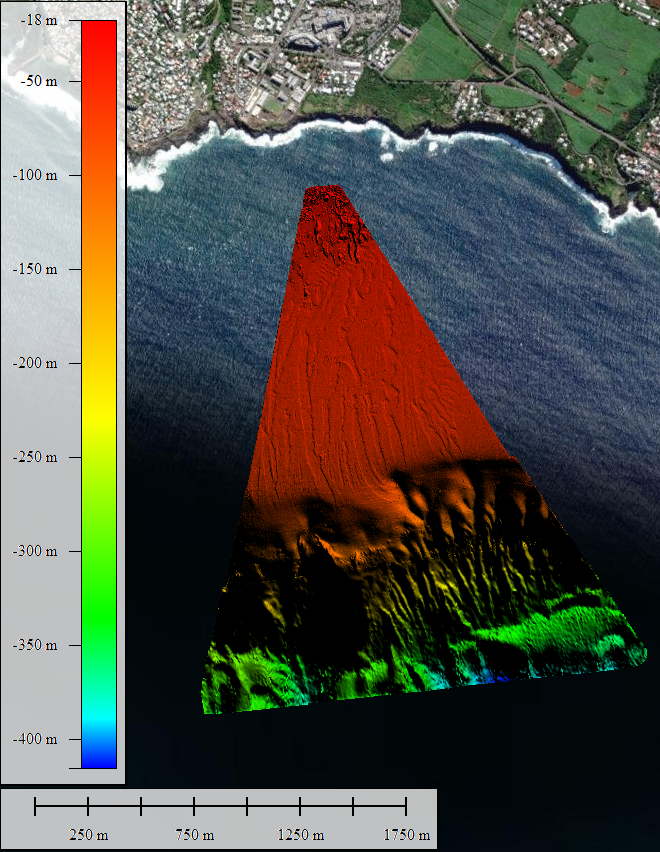
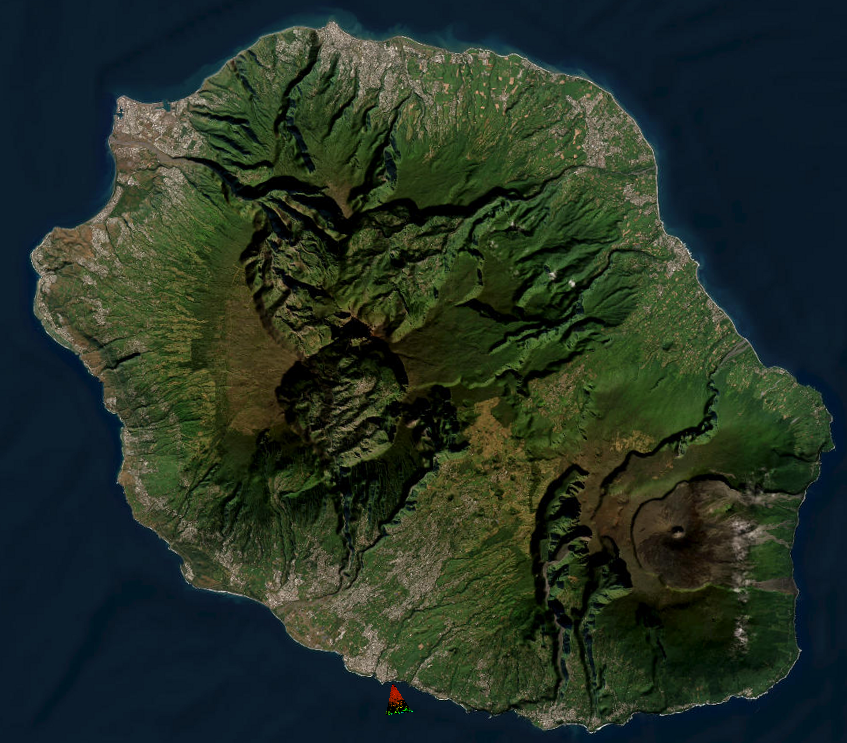
For ID OCEAN, this acquisition was the first ever in such great depths, and much more demanding than usual since it imposed a greater preparation upstream. Seeing the data, it was a real relief for the team to confirm the bathymetric echosounder’s technical characteristics in such great depths.
The data collected by the ID OCEAN teams goes down to -400 meters. The pipes being installed down to -1000 meters, the data between -400 and -1000 meters will then be recovered by gravimetry, or with the help of data previously collected by the Shom (Naval Hydrographic and Oceanographic Service), then in a second time by survey with an AUV (“Autonomous Underwater Vehicle”) before the installation of hydraulic pipes.
At the end of 2020, CADDEN provided ID OCEAN with its first R2Sonic multibeam echosounder, more precisely the Sonic 2022 model.
“We were looking for a multibeam echosounder that was lightweight, easy to mobilize and transport,” says Steven Le Bars. “It had to provide very high quality bathymetric data. The more reliable the data, the less time we have to spend cleaning it during post-processing.
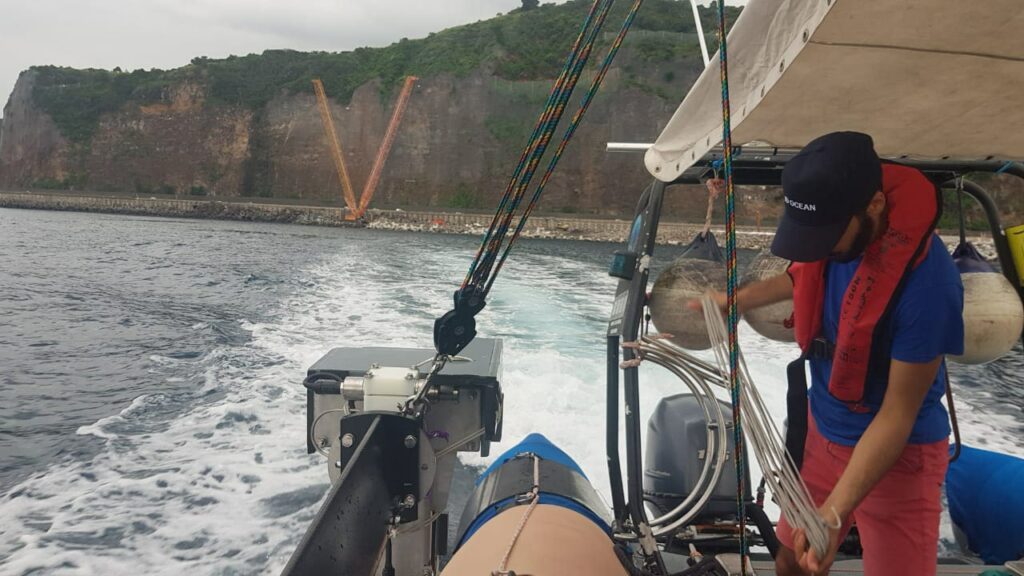
“The Sonic 2022 was a good compromise between compact form factor, resolution, coverage area and data quality. We tried it with another multibeam echosounder but it didn’t deliver the resolution we needed. The Sonic 2022 gets excellent data.”
For its R2SONIC 2022 echosounder, ID OCEAN created a custom mechanical mount, including the IMU, that is convenient to transport for international projects. “We also standardized and optimized the boom with the other sensors so that it only takes us one hour to mobilize the Sonic 2022,” says Steven Le Bars.
“The operation of the R2Sonic multibeam echosounder is simple and accessible. It was easy to learn,” says Steven Le Bars.
We had a good relationship with CADDEN’s sales department and the price-quality ratio was consistent with our expectations,” says Steven Le Bars.
The R2Sonic multibeam echosounder convinced us with its many advantages: quality, reliability, excellent data, form factor, robustness… not to mention maintenance, a decisive criterion in an island context.”
Did you like this article ?
Share it with your colleagues or friends
Read next

Mentions légales – Politique de données personnelles – ©CADDEN
Vos données sont collectées et traitées pour vous envoyer notre newsletter et améliorer l’expérience utilisateur du site web. Dans ce cadre, le responsable du traitement est CADDEN. Vous disposez d’un droit d’accès, de rectification, et de suppression de vos données, ainsi que d’un droit de limitation, de portabilité ou d’opposition. Pour exercer ces droits, vous pouvez nous contacter via le formulaire de contact. Pour plus d’informations sur la façon dont nous traitons vos données personnelles, vous pouvez consulter notre Politique de confidentialité.